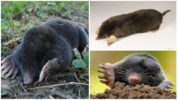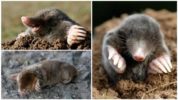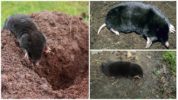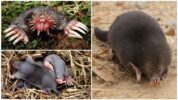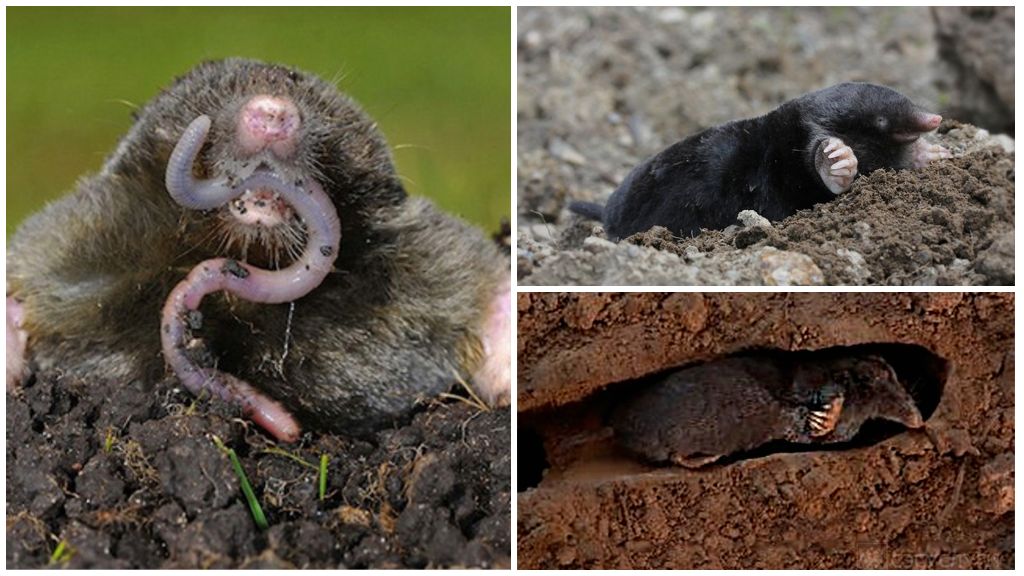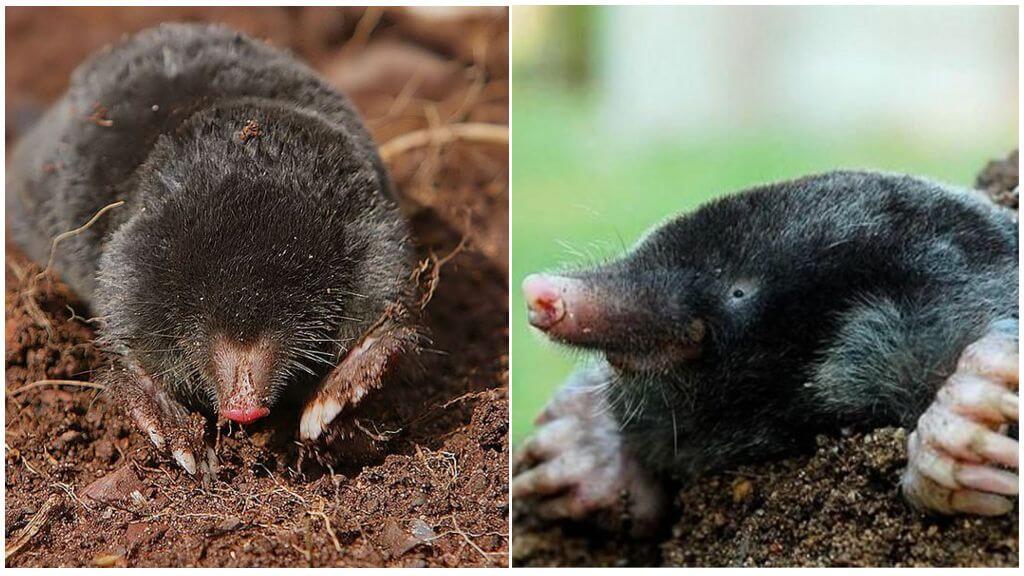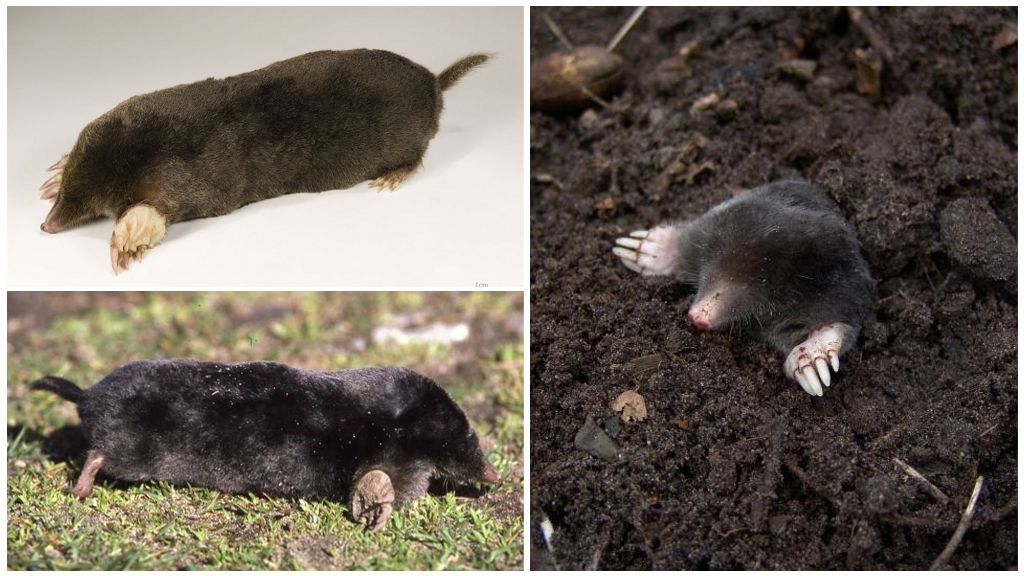- Common or European mole
- Caucasian mole
- Siberian or Altai mole
- Stargazer
- Marsupial Mole
Mole - a small underground animal, refers to mammals, insectivores. Unusual mole distributed around the world, loves moist loose soil, is not found high in the mountains, in wetlands. Many species of moles have a similar appearance, lead an identical lifestyle. Mole in Russia is found everywhere - in forest edges, in deciduous forests, fields, gardens, in summer cottages, in gardens, in flower beds. The names of the family come from the word dig, dig.
Common or European mole
This mole, which is often met by gardeners, gardeners, wildlife lovers.
- The body size of the mole does not exceed 20 cm, the average dimensions are 15 cm. The trunk is oblong.
- The weight of an adult is about 120 g, the tail is no more than 4 cm long.
- The muzzle is elongated, the nose with widened nostrils is clearly visible. There is nothing more that stands out on the head.
- The eyes of a mole with small slots without moving eyelids. Mole's vision is weakbut a good sense of smell.
- The fur is soft, thick, short, black. On the abdomen, the color is lighter. The tone changes somewhat depending on the time of year. In winter, wool is the most fluffy, beautiful. The animal sheds about 4 times a year. A photo of the mole can be seen below.
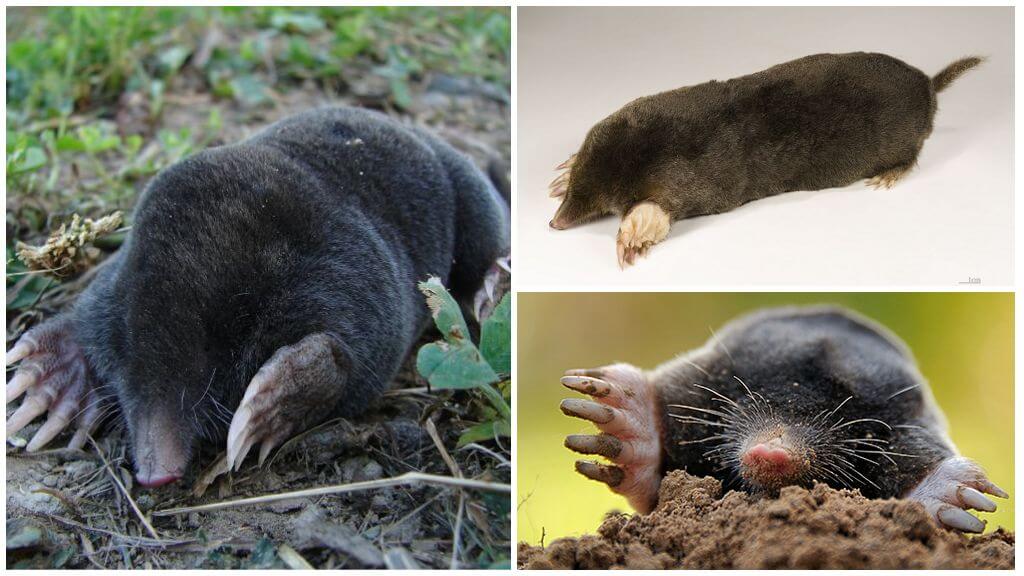
The animal mole has one bright distinctive feature - spade-shaped forelimbs with long claws. The animal digs the ground with them, is screwed into the passage, with its hind legs pushes the soil out. In places of digging holes, embankments are formed - molehills.
Mating season common mole starts in early spring, lasts until the end of May. Around June-July, a younger generation appears. In the offspring about 9 moles. Female bears cubs about 30 days. Gives the European mole only once a season. Carefully caring for babies for about 2 months. Cubs squeak like chickens, kiss each other, but already at the age of 1 month they become pugnacious, aggressive towards their brothers and sisters.
An earth mole is shown out only for mating, it happens at night. The rest of the time he spends underground. Digs numerous moves, labyrinths. This species of moles feeds. earthworms, insects, pupae, caterpillars, less often slugs, lizards, mice, snakes, frogs.
Interesting!
The mole builds labyrinths for hunting at a depth of no more than 20 cm from the surface. Earthworms crawl into the already prepared tunnels, which are attracted by the musky smell emanating from the mole. The animal bites the head of the worm, immobilizes, but for some time the prey remains alive.
Caucasian mole
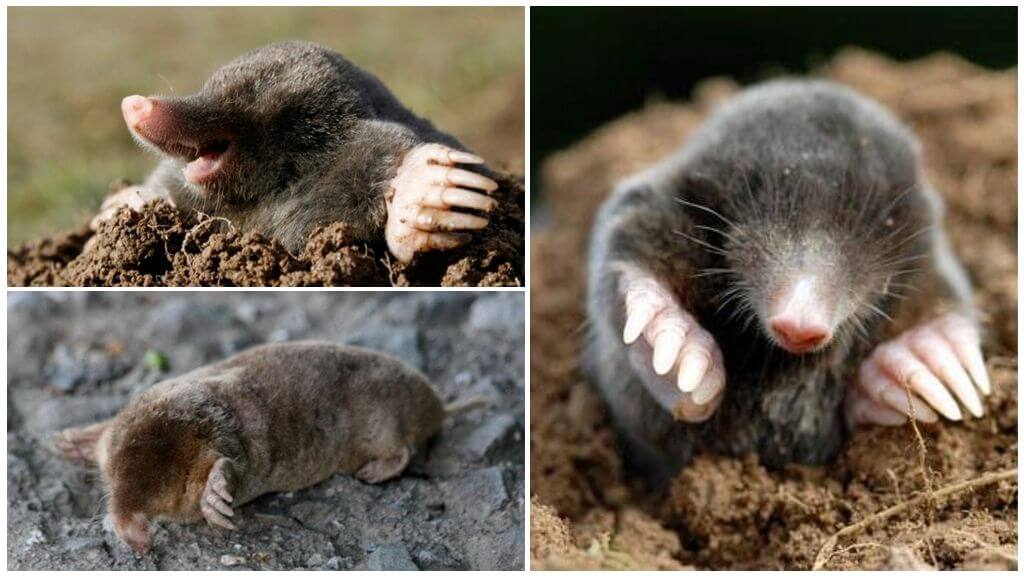
It is one of the varieties of ordinary moles. It is found in the Caucasus and Turkey. Outwardly, the mole looks like a European, but differs in smaller sizes.
- The average body length of a mole is about 14 cm. Females are smaller than males.
- Weight no more than 90 g.
- The tail length is about 3 cm.
- The eyes are covered with skin, hardly noticeable.
- A mole’s nose stands out on an elongated muzzle.
- The coat is thick, black, in the summer it acquires a brown hue.
The Caucasian mole digs passages at a depth of 5-20 cm, leaves loosened soil on the surface. In hot weather, it deepens by 50-100 cm. There it builds a nest.The main camera is located under a tree or in shady areas. Numerous moves depart from the mole’s nest.
Interesting!
For a day, a small mole loosens about 45 m of soil. In search of food, he builds 20 new tunnels per day. The habitat area of one adult animal is about 1 ha. The animal does not tolerate competition, lives alone, tolerates the presence of a couple only during the mating season. The territory is marked with a special secret.
Mole breeding begins at the end of March, in April cubs already appear. Grow extremely fast. At the age of 1 month they reach the size of an adult mole, at 60 days of their existence they leave the family to build their own nest.
Siberian or Altai mole
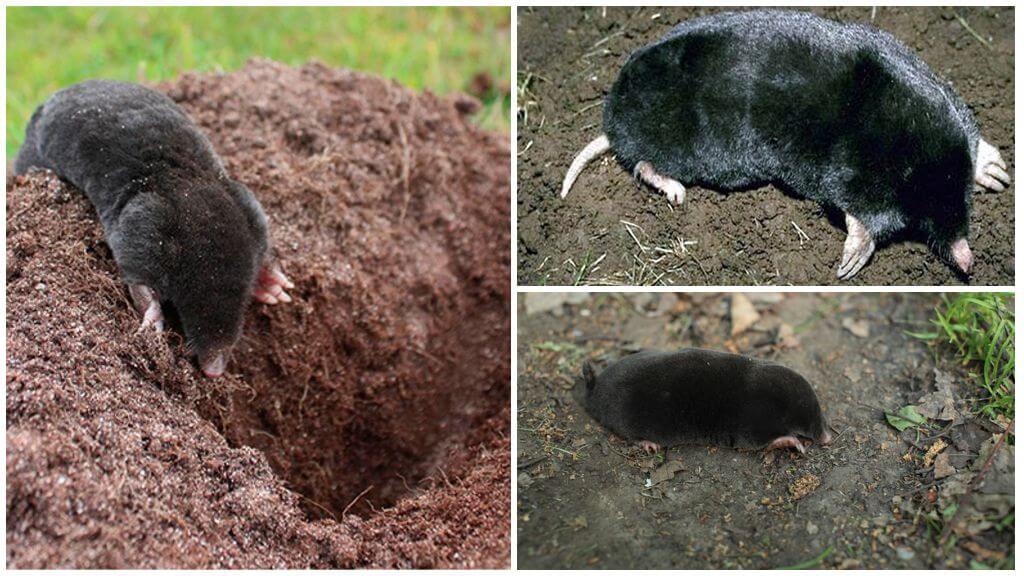
A kind of common mole. Differs from relatives in large sizes. It lives on the territory of Siberia, Mongolia.
- The body size of the mole is about 20 cm. The females are slightly smaller.
- The tail length does not exceed 4 cm.
- The eyes are round, small, have a moving eyelid.
- The muzzle is elongated, with a well-defined nose.
- The ears are small, almost imperceptible.
- Shovel-shaped forelegs of a mole with long claws, hind legs similar to rat limbs.
- The coat is dark black, but is smoky, yellow, and brown.
- The Siberian mole weighs from 100 to 225 g.
A distinctive feature of this species of moles is a long pregnancy. Fertilization occurs in the summer, but the embryo freezes until spring. Cubs appear in April-May. Pregnancy lasts 9 months. In the offspring about 11 cubs.
The main food is earthworms, followed by beetle larvae, pupae, and small insects. A Siberian mole can easily bite a mouse, a lizard, a sick rat, a bear, a snake, a snake, a frog. There are cases of cannibalism. The winner takes possession of the victim’s possessions, marking his territory with a special secret.
Stargazer
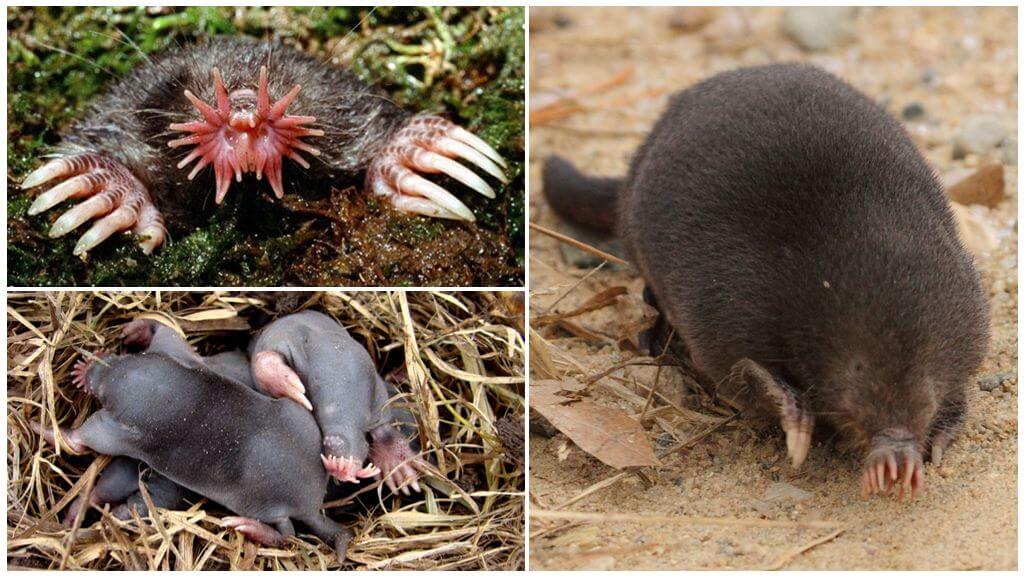
The second name of the mole star-snout. Differs from relatives in an unusual nose. The stigma consists of 22 soft processes - tentacles. Thanks to them, the animal finds food. The rest of the body structure is similar to the European mole.
- The body of the mole is elongated, about 22 cm long.
- The tail is long - 8 cm.
- The coat is thick, soft, silky black, brown.
- Auricles absent.
- Small eyes are not covered with skin.
Zvezdonosov perfectly dives, dives. The mole feeds on crustaceans, slugs, earthworms, larvae, and mollusks. In addition to the underground, aquatic lifestyle, leads land. It can build nests in rotten stumps, hollows of old trees, under leaves. Prefers marshland, soil with high humidity. Often found near rivers, lakes, swamps in the United States.
Interesting!
This representative of the mole family can live quietly in pairs. The male helps the female to grow, feed babies. Unlike other relatives, it is less aggressive.
Marsupial Mole
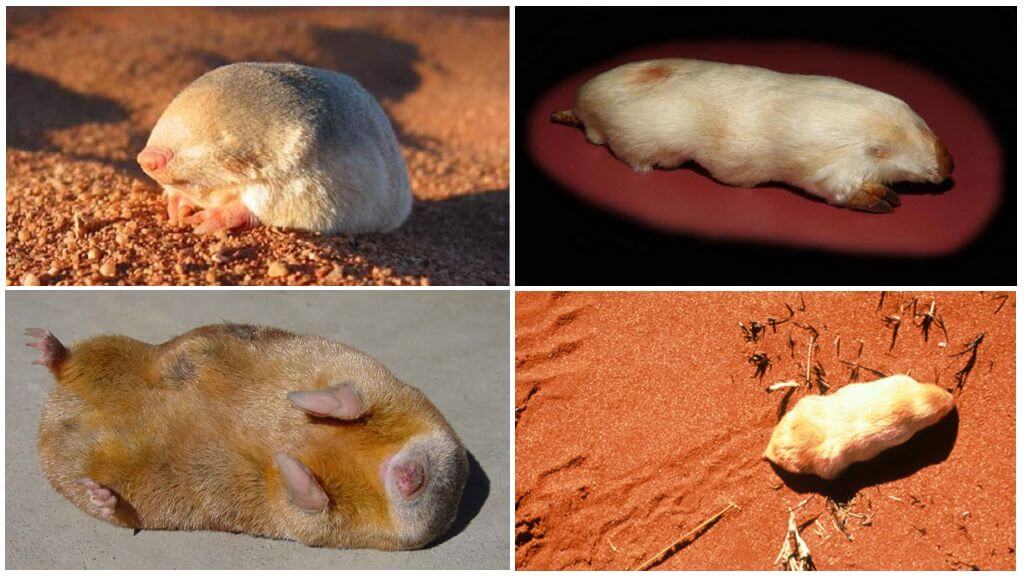
The representative of Australia, about life, the behavior of which is known very little. Body size about 20 cm, weight up to 90 g. Small tail - 2 cm. Body color white, pink, brown. The coat is soft, thick, extremely beautiful.
The marsupial mole lives underground, but does not build a huge number of moves, tunnels, most of them immediately bury itself. It seems that the animal is swimming in the sand. Leads a solitary lifestyle, the female for the period of mating is by smell.
Periodically shown on the surface, especially after rain. The mole builds its hole at a depth of 1 m. The favorite food is the larvae of beetles, also feeds on lizards, plant seeds. No food can live no more than 17 hours.
Moles come in different sizes, are slightly different in appearance, but lead an identical lifestyle. They are useful animals - they loosen the soil, destroy harmful insects, but with great activity they harm agriculture, undermining the root system of plants during digging tunnels.For this, farmers are fight against molestrying to keep their landings from an underground pest.
